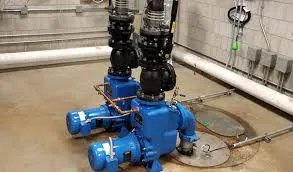English
- Afrikaans
- Albanian
- Amharic
- Arabic
- Armenian
- Azerbaijani
- Basque
- Belarusian
- Bengali
- Bosnian
- Bulgarian
- Catalan
- Cebuano
- Corsican
- Croatian
- Czech
- Danish
- Dutch
- English
- Esperanto
- Estonian
- Finnish
- French
- Frisian
- Galician
- Georgian
- German
- Greek
- Gujarati
- Haitian Creole
- hausa
- hawaiian
- Hebrew
- Hindi
- Miao
- Hungarian
- Icelandic
- igbo
- Indonesian
- irish
- Italian
- Japanese
- Javanese
- Kannada
- kazakh
- Khmer
- Rwandese
- Korean
- Kurdish
- Kyrgyz
- Lao
- Latin
- Latvian
- Lithuanian
- Luxembourgish
- Macedonian
- Malgashi
- Malay
- Malayalam
- Maltese
- Maori
- Marathi
- Mongolian
- Myanmar
- Nepali
- Norwegian
- Norwegian
- Occitan
- Pashto
- Persian
- Polish
- Portuguese
- Punjabi
- Romanian
- Russian
- Samoan
- Scottish Gaelic
- Serbian
- Sesotho
- Shona
- Sindhi
- Sinhala
- Slovak
- Slovenian
- Somali
- Spanish
- Sundanese
- Swahili
- Swedish
- Tagalog
- Tajik
- Tamil
- Tatar
- Telugu
- Thai
- Turkish
- Turkmen
- Ukrainian
- Urdu
- Uighur
- Uzbek
- Vietnamese
- Welsh
- Bantu
- Yiddish
- Yoruba
- Zulu
Telephone: +86 13120555503
Email: frank@cypump.com
Dec . 09, 2024 20:56 Back to list
Optimal Performance of Slurry Feed Pumps in Industrial Applications and Processes
Understanding Slurry Feed Pumps An Essential Component in Many Industries
Slurry feed pumps play a pivotal role in numerous industrial applications, especially in sectors such as mining, wastewater treatment, and construction. These specialized pumps are designed to handle a mixture of solid particles and liquids known as slurries, facilitating the efficient transport of materials in various processes.
What is a Slurry?
A slurry is a thick mixture of solid particles suspended in a liquid, often water. This combination can vary in composition and viscosity, depending on the industry and the specific materials being processed. For instance, in the mining sector, slurries may contain minerals, water, and chemicals, while in wastewater management, they might consist of organic waste, solids, and contaminants.
The Importance of Slurry Feed Pumps
Slurry feed pumps are essential to the effective movement of slurries through pipelines and equipment. Unlike standard pumps that handle clean fluids, slurry pumps are constructed to manage the increased wear and tear caused by abrasive particles. Their ability to maintain performance under challenging conditions makes them indispensable in numerous applications.
1. Mining and Mineral Processing In the mining industry, slurry feed pumps are used to transport coal, minerals, and tailings. The harsh conditions of mining operations expose pumps to significant wear, requiring durable materials such as high-chrome alloy or rubber linings to extend their lifespan. Proper pump selection is crucial in maintaining efficiency and reducing operational costs over time.
2. Wastewater Treatment In wastewater treatment plants, slurry pumps are responsible for moving sludge from one stage of processing to another. These pumps can handle viscous fluids, ensuring the efficient removal and processing of waste. Given the variable nature of sewage and sludge, pumps in this application must be able to adapt to changes in composition and flow rate.
slurry feed pump

3. Construction In construction sites, slurry pumps are often utilized for transporting cement mixtures or other heavy materials. Their ability to handle high-density mixtures effectively makes them suitable for various construction tasks, from foundation work to grading and stabilization.
Types of Slurry Pumps
Slurry feed pumps come in various types, each with its unique characteristics tailored to specific applications
- Centrifugal Slurry Pumps These are the most commonly used pumps for slurry transport. By converting rotational kinetic energy into hydrodynamic energy, they create a flow that is ideal for many slurry applications, especially those with a lower concentration of solids.
- Positive Displacement Pumps Unlike centrifugal pumps, these pumps move slurries by trapping a fixed amount of material and forcing it into the discharge pipe. Positive displacement pumps are beneficial for handling high-viscosity slurries and delivering a consistent flow rate.
- Submersible Pumps Designed to operate when submerged in the slurry, these pumps are often used in applications where the slurry is deep or difficult to access. Their design helps reduce the risk of cavitation, a common problem in conventional pumps.
Conclusion
Slurry feed pumps are critical components across various industries, providing essential support for the efficient handling of slurries. Understanding the unique requirements and challenges of transporting slurries plays a significant role in selecting the appropriate pump type. As industries continue to evolve and demand more efficient processes, slurry pumps will remain at the forefront of innovation, ensuring that they meet the needs of modern applications. Whether in mining, wastewater management, or construction, the right slurry feed pump can enhance efficiency, reduce wear, and ultimately contribute to the success of industrial operations.
-
Horizontal Split Case Pump with GPT-4 Turbo | High Efficiency
NewsAug.01,2025
-
ISG Series Pipeline Pump - Chi Yuan Pumps | High Efficiency, Durable Design
NewsAug.01,2025
-
Advanced Flue Gas Desulfurization Pump with GPT-4 Turbo | Durable & Efficient
NewsJul.31,2025
-
ISG Series Vertical Pipeline Pump - Chi Yuan Pumps | Advanced Hydraulic Design&Durable Construction
NewsJul.31,2025
-
ISG Series Vertical Pipeline Pump - Chi Yuan Pumps | Energy Efficient & Low Noise
NewsJul.31,2025
-
pipeline pump - Chi Yuan Pumps Co., LTD.|High Efficiency&Low Noise
NewsJul.31,2025










